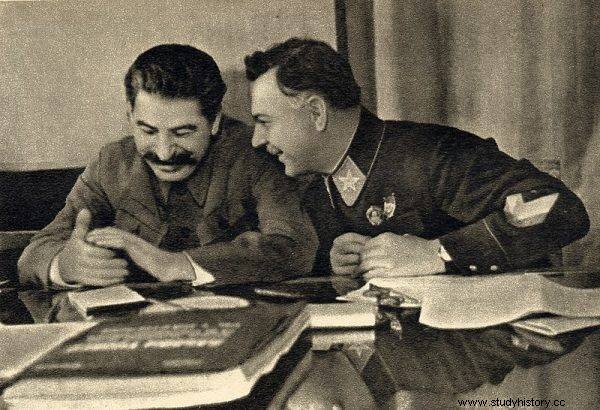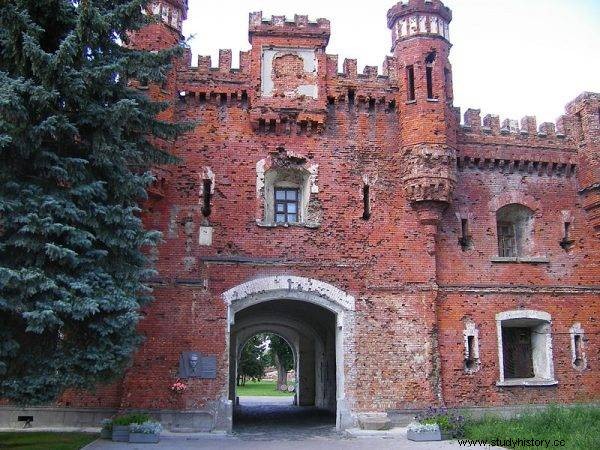For the Soviet Union, the great Patriotic War began at 4 a.m. on June 22, 1941 with a massive attack on the Brest fortress. The Germans hoped that the defenders would fall after 8 hours. They miscalculated. The Soviet soldiers held out for a month!
In February 1942, during the Jeliecka operation, the archives of the 45th Wehrmacht division, which - as it turned out - took part in the attack on the Brest Fortress, were handed over to the Soviet military. Among the documents were found, among others "Report on the occupation of Brest", in which the German commander, Lieutenant General Schlieper, described the actions of the Soviet troops:
The Russians in Brest fought extremely stubbornly and persistently. They showed excellent infantry training and showed remarkable will to fight.
Only then did the truth about the fights of that time slowly come to light. Previously, even the command of the Red Army - due to the chaos in the first months of the war - did not know what the defense of the fortress looked like.
Panic and disbelief
While the war was inexorably nearer the Soviet border, Joseph Stalin stubbornly ignored this fact. He did not believe his intelligence reports and secret reports by British diplomats. When Marshal Georgy Zhukov tried to convince him that one should prepare for the attack of the Germans, the dictator replied that Zhukov had a large but stupid head.
Therefore, on June 21, 1941, more than half of the personnel of the Brest Fortress was sent to a training camp. Approx. 9 thousand people remained on the spot. soldiers (not counting those in a military hospital as well as women and children).

While the war was inexorably nearer the Soviet border, Joseph Stalin stubbornly ignored this fact.
When the next day at 4 a.m. the Germans attacked Brest, the soldiers and officers were shocked as the command convinced them that there would be no war , and all kinds of conversations about her are the work of "provocateurs". Therefore, when the 45th division under the command of Lieutenant General Schlieper attacked them, they were completely unprepared. In addition, the Germans had a numerical advantage - there were 20,000 - and modern weapons, and their powerful artillery fire from the very beginning damaged communications, warehouses and many facilities.
Meanwhile, at first, Soviet troops arrived at their units half-dressed and confused. It was only after the first shock was over that they started fighting.
30 days of bravery
The Germans encircled the fortress at 9 am, but it was too early to strike back the success, because the Russians fiercely defended themselves. After just a few hours of fighting, the German losses amounted to 21 officers, 290 non-commissioned officers and many privates.
In the evening of June 22, the enemy approached the buildings of the fortress, and the command of the 45th division sent a telegram to Berlin about the seizure of the object. But the optimism of the Germans was premature, because the defenders did not think about surrendering.
A 600-strong unit commanded by Major Piotr Gawriłow gathered in the Eastern Fort and fired on the attackers from there. Although the Red Army soldiers were poorly armed and had no place to get ammunition, had one advantage - they knew well the topography of the Fortress and the layout of its tunnels and casemates . In addition, they received support from their wives and other family members who reached them through sewers to bring them water and food. Anyway, some of the women who were able to shoot joined the soldiers.

Brest Fortress
Once again, the Germans trumpeted the victory on July 1, when they managed to destroy the core of the fortress's defenders. But the Red Army resistance continued. The fighting took the form of a guerrilla war - Soviet soldiers could freely move around the entire area of the facility, appearing in the most unexpected places and attacking the Nazis.
According to the official interpretation, the last defender of the Brest fortress was the aforementioned Major Piotr Gawriłow, who was taken prisoner on July 23, 1941. The officer was extremely exhausted, as evidenced by the report of the German doctor examining him:
(...) [Gavrilov] was in his major uniform, but his outfit was worn, his face was covered with soot and a long thick beard. He was injured, unconscious, and looked extremely thin. It was, in the truest sense of the word, a leather-wrapped skeleton .
The moment he hit the enemy's hands, Gavrilov was dying - he did not even have the strength to swallow the water that had been used to drink him in a German hospital. But the major had tremendous fortitude - the soldiers who captured him reported in the report that an hour before his capture, the officer was firing at them and throwing grenades, killing and injuring some of them.
"I'm dying but I'm not giving up!"
But the truth about the defenders of the Brest Fortress was revealed only when the Red Army - after liberating its own country - marched to the West. On July 28, 1944, Soviet soldiers drove the enemy out of Brest and entered the fortress.
They then carefully examined the individual objects and discovered many inscriptions made by the defenders of the fortress in the summer of 1941. These were testimonies of their struggle . On a brick wall near the Terespol Gate, someone immortalized the words:“There were five of us:Sedov, Grutov, Bogolubov, Mikhailov, Sievanov. We repelled the first attack. June 22, 1941. We will die, but we will not leave! ”.
In the building of the soldier's club, which once housed an Orthodox church, there was such a testimony:“We were three Muscovites - Ivanov, Stepanchikov, and Zhuntiajew. We defended this church together. We swore to each other that we would die, but we would not get out . July, 1941 ”. This story continued:“I was left alone. Stepanchikov and Zhuntiaev were killed. I have one last grenade left, I won't get caught. Comrades, please avenge us! ”.
The last inscription in the fortress comes from July 20, 1941: "I am dying, but I am not giving up. Fatherland, goodbye. ”
In the summer of 1944 it turned out that the resistance against the Germans continued in Brest even after the capture of Major Piotr Gawriłow. This was evidenced by the stories of the wives and children of the defenders of the fortress. In the tunnels and casemates of the facility there were still lonely Soviet soldiers who tried to fight the enemy.
